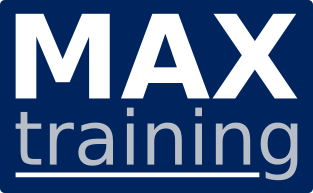Db2 12 for z/OS Introduction to System Administration (all optional themes included)
Code: TD-CV853GspecialTrainer feedback on the official course duration: not realistic to teach the course in 3 days -> TechData plans 5 days for your training (intensive & detailed)
Overview
This course provides students with an introduction to the skills and knowledge needed to administer a Db2 12 for z/OS system.
Audience
This course is intended for z/OS system administrators, database administrators, or other technical individuals who will be managing Db2 12 for z/OS.
Prerequisites
- Understanding of the objects (such as databases, table spaces, tables, indexes, and so forth) used in a Db2 subsystem
- Basic knowledge of SQL
- At least one year as a z/OS systems programmer or equivalent knowledge
OR
- At least one year as a Db2 for z/OS Database Administrator
Objective
After completing this course, students should be able to:
- Start and stop a Db2 subsystem
- Use the SET SYSPARM command
- Access the system log to gather information about the subsystem initialization, operation, or shutdown
- Describe the components and address space structure of a Db2 subsystem
- Explain the use of RACF (or another external security program) for Db2 connection security
- Explain the use of Roles and Trusted Contexts
- Implement security procredures for a Db2 subsystem
- Explain Db2 program flow for all environments
- Explain parameter setting for the IRLM
- Invoke and utilitze Db2 TSO facilities
- Use the Db2 Catalog to monitor subsystem authorizations
- Work with the Active Log data sets
- Explain Db2 logging
- Use SET LOG SUSPEND and SET LOG RESUME
- Use DSNJU004 to print log map and interpret the results
- Use DSNJU003 to rename Db2 data sets
- Plan for recovery of a BSDS failure
- Monitor and control a Db2 subsystem
- Explain transaction flow in IMS and CICS environments (optional)
- Describe the CICS and DB2 environment (optional)
- Explain the difference between JDBC and SQLJ
- And much more
Course Outline
Starting, stopping, and accessing Db2• Starting Db2 as part of the z/OS IPL process• Data set allocation and APF authorization• The START DB2 and STOP DB2 commands• zParms, DSNTIJUZ, and DSNZPARM• Address spaces• IRLM and lock storageDb2 components and processes• BSDS and logging• Catalog and directory• Program preparation and execution• Transaction execution• Data sharing in the sysplexSystem security• Protecting Db2 data sets• Controlling connections to Db2• Db2 authorization exits• Trusted context and roles• Securing an application serverDb2 authorization• Authorizations• Controlling access for dynamic and static SQL• Access control authorization exits• Distributed securityProgram flow for all environments• Connection types and language interfaces• Program flowTSO and batch environments• TSO• UtilitiesTransaction flow in IMS and CICS (optional)• Transaction processing• Thread reuse• SIGNON exitCICS - Db2 environment (optional)• CICS connections to Db2• DSNC transactionIMS - Db2 environment (optional)• IMS-Db2 introduction• IMS TM• IMS/DLI batch environmentDistributed - Db2 environment• Distributed attachment• Location aliases• DDF profiling• Block fetch• Db2 REST servicesLogging• The Db2 log• Log commands• Archiving considerations• BSDSDb2 utilities• Categorization• DSNJU003 and DSNJU004• BACKUP and RESTORE SYSTEMOperations (monitoring and controlling Db2)• Issuing Db2 commands• Basic workload controls• Monitoring and controlling utilities• DISPLAY commands• Starting / stopping databasesRecovery• Planning for recovery• Table space recovery• Log considerations• DISPLAY and SET LOG commands• Recovery considerationsSystem recover/restart• System checkpoints• System restart after normal shutdown• Page externalization• Two-phase commit processing• System restart after system failure• Recovery considerationsJava with Db2 (optional)• JavaAdministrative task scheduler (optional)• Overview• Routines• Scheduling features• Life cycle• Syncronization• Commands
Price (ex. VAT)
Duration
Delivery methods
- Classroom
- On-site (at your location)
- Virtual (instructor online)
